More about Adam
- All
- Info
- Shop

Contributor
Albrecht Dürer’s Adam is part of a joint painting that also features—you guessed it—Eve.
It would be wrong to call it the first painting of the two, as it’s part of a tandem telling one story. But because they are literally separate pieces, and we associate things on the left as coming before the right, I guess we can call Adam the beginning of the story being told between these two paintings.
It’s a story you undoubtedly know, but if this is your first time hearing about it, even if you don’t consider yourself a Christian, then you’re definitely an alien. I won’t bore you with the details, and instead assume you’re already familiar with it. For you aliens, just use Google. You’ll be up to speed in no time.
My guy Albrecht Dürer was that dude. He’s responsible for works like Four Horsemen of the Apocalypse, The Feast of the Rosary, and Praying Hands. After a trip to Italy during the Renaissance, my guy came back to his native Germany inspired as hell. Dürer was part of a movement that we now call the Northern European Renaissance. It featured artists like Jan Van Eyck and Peter Bruegel the Elder. And, like their Italian counterparts, they depicted a lot of biblical scenes. The only difference is that the Northern Europeans did so in a manner devoid of devotion to these divine figures. It wasn’t about worshipping who they were, but more about studying how they looked. They were conveyed in a way that was grounded and more realistic for the viewer.
Something cool about Adam & Eve was that the infamous scene was done as an engraving first, about three years prior to the painting. It wasn’t in two pieces and it wasn’t as large, but it did have the Italian influence in its depiction. But instead of doubling down on it, Dürer added his own spin. He placed them in front of what’s clearly a German forest. My dude wanted the smoke. Oh, you thought this was a Michelangelo? A Raphael? Nah, fam. You ain’t got trees like that in Italy. Put some respect on Dürer’s name.
He wasn’t done with Adam & Eve after engraving them. We wouldn’t be here if he was. Adam & Eve the painting came three years later in the year of our lord 1507. And he brought even more smoke this time around. This depiction was a lot larger. And Adam & Eve were portrayed more realistically. Adam in particular is muscular, but not in a way that makes you jealous. He holds an apple by the branch it’s attached to, but I think it’s important to note that he’s not directly holding the apple in his hands, maybe to convey that he has not yet been corrupted. A few leaves from that same branch conveniently cover his junk.
Remember how I said that Adam & Eve were companion paintings? Separate but one at the same time? Well what makes them two paintings is the fact that they’re framed individually. But they are always displayed together, side by side. This is interesting because it sends the message that Adam & Eve are not on the same page. There is a gap in their innocence and their knowledge and the individual framing is a way to convey that. It’s brilliant when you really think about it.
But unfortunately, not everyone thought that. Because of the nature of the paintings, you know, being almost nude, they were kept away from the public eye for hundreds of years. What a shame. Generations of humans who could have seen and gleaned something from the beauty of these paintings missed out because of something as trivial as painted nudes.
Nonetheless, whether in some back room or the main hall of a museum, Dürer’s brilliance flourishes when you take a look at Adam’s background. He stands in front of a black abyss of nothingness. But it’s not because the painting is unfinished. It’s so you’re not distracted by Eden and instead you’re giving your undivided attention to Adam and his nice bod. Dürer said screw the backgrounds. I want you to see this, so this is all I’m showing you. And you’re gonna love it. And we do.
It’s crazy to think that Albrecht Dürer went all the way to Italy to gain knowledge and share it with the world through his own prism. It’s not unlike the tale of Adam & Eve when you think about it. Dürer ate the apple so to speak—the apple being renaissance aesthetics— and he came home a changed man. Not corrupted, no. But with the means to show the world what’s possible when we learn from each other.
Sources
- Perez, Sergio. “Albrecht Dürer's Adam and Eve Returns to Public Display at the Prado Museum”. Artdaily. November 24, 2010 https://artdaily.cc/news/42825/Albrecht-D-rer-s-Adam-and-Eve-Returns-to…
- The Art Story. “Artworks by Albrect Durer”. Accessed October 24, 2019. https://www.theartstory.org/artist/durer-albrecht/artworks/
- The Art Story. “Summary of Northern European Renaissance”. Accessed October 24, 2019. https://www.theartstory.org/movement/northern-renaissance/
- Totally History. “Adam and Eve”. Accessed October 24, 2019 http://totallyhistory.com/adam-and-eve/


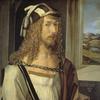
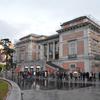
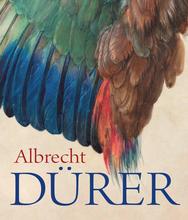
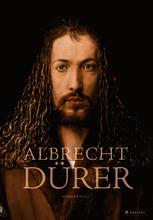










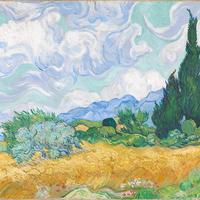
I love this painting of Adam holding the apple. The apple is covering up the parts of his body that only have to be covered up because of that apple. Without the apple and temptation and sin, Adam would not have to cover up his penis, but because of it, he uses the cause of the problem to cover up.